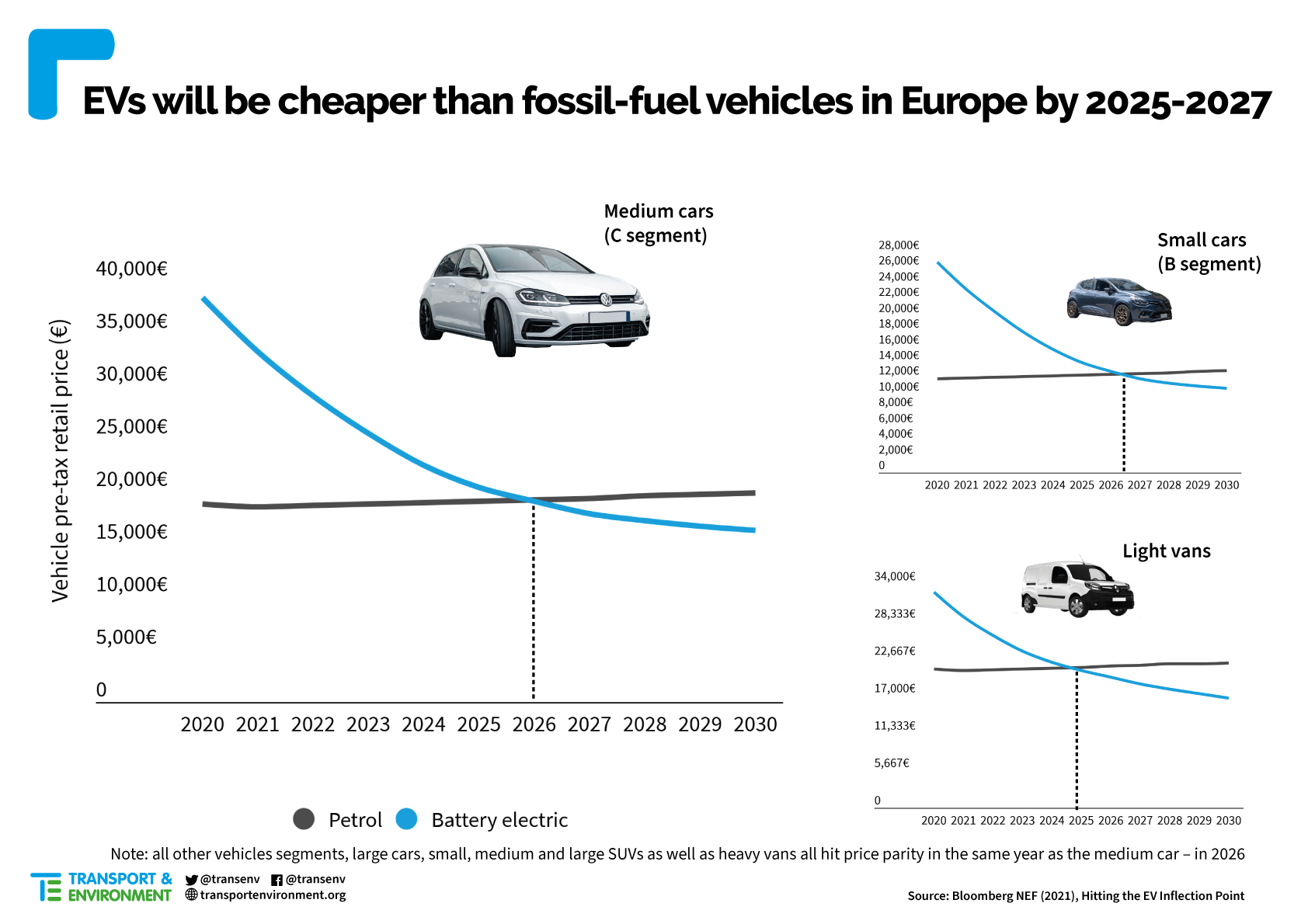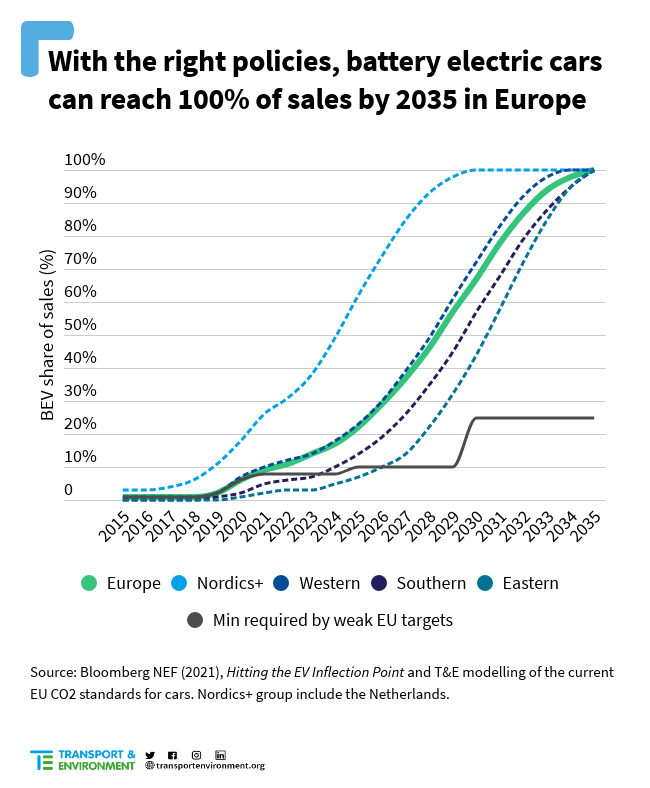The research found that battery electric vehicles could reach 100% of new sales across the EU by 2035, if lawmakers introduce measures like tighter vehicle CO2 targets and strong support for charging infrastructure. T&E called on the EU to tighten emissions targets in the 2020s and set 2035 as the end date for selling new polluting vehicles.
Electric sedans (C and D segments) and SUVs will be as cheap to produce as petrol vehicles from 2026, while small cars (B segment) will follow in 2027, BNEF projects. It finds that falling battery costs [1], new vehicle architectures, and dedicated production lines for electric vehicles will make them cheaper to buy, on average, even before subsidies.

But the early build-up of EV production and sales will be crucial to drive down costs and generate consumer buy-in for further adoption in the future, BNEF found. Only stricter CO2 targets for vehicle-makers in the 2020s, including a new 2027 target, can ensure that, T&E said.
Julia Poliscanova, senior director for vehicles and emobility at T&E, said: “EVs will be a reality for all new buyers within six years. They will be cheaper than combustion engines for everyone, from the man with a van in Berlin to the family living in the Romanian countryside. Electric vehicles are not only better for the climate and Europe’s industrial leadership, but for the economy too.”
Light electric vans will be cheaper than diesel vans from 2025, and heavy electric vans from 2026, BNEF also finds. But today, e-vans account for just 2% of sales because of weak emissions standards that fail to stimulate manufacturers to invest in their supply. T&E said EU lawmakers will need to set van-makers challenging CO2 targets, alongside dedicated e-van sales quotas, to increase investment and the number of electric models on the market.
Battery electric cars and vans could reach 100% of new sales by 2035, even in southern and eastern Europe, if lawmakers increase vehicle CO2 targets and ramp up other policies to stimulate the market such as a faster roll-out of charging points. If left to the market without strong additional policies, battery electric cars will reach only an 85% market share, and e-vans just 83%, in the EU by 2035 – missing Europe’s goal to decarbonise by 2050.

Julia Poliscanova said: “With the right policies, battery electric cars and vans can reach 100% of sales by 2035 in western, southern and even eastern Europe. The EU can set an end date in 2035 in the certainty that the market is ready. New polluting vehicles shouldn’t be sold for any longer than necessary.”
The EU Commission should set an end date for fossil-fuel car sales in June, when it will propose tightening the bloc’s car CO2 targets, T&E said. Last month, 27 major European companies called on EU lawmakers to set 2035 as the end date for selling new combustion engine cars and vans. A recent poll showed 63% of urban residents in Europe support a ban after 2030. At least seven carmakers and 10 European countries have announced plans to phase out conventional cars. But, in the absence of an EU commitment, these deadlines remain either voluntary or uncertain as to their enforceability.
Notes to editors:
[1] New battery prices will fall 58% by 2030 (compared to 2020), rapidly reducing electric vehicle costs, the report finds.
Read more:


